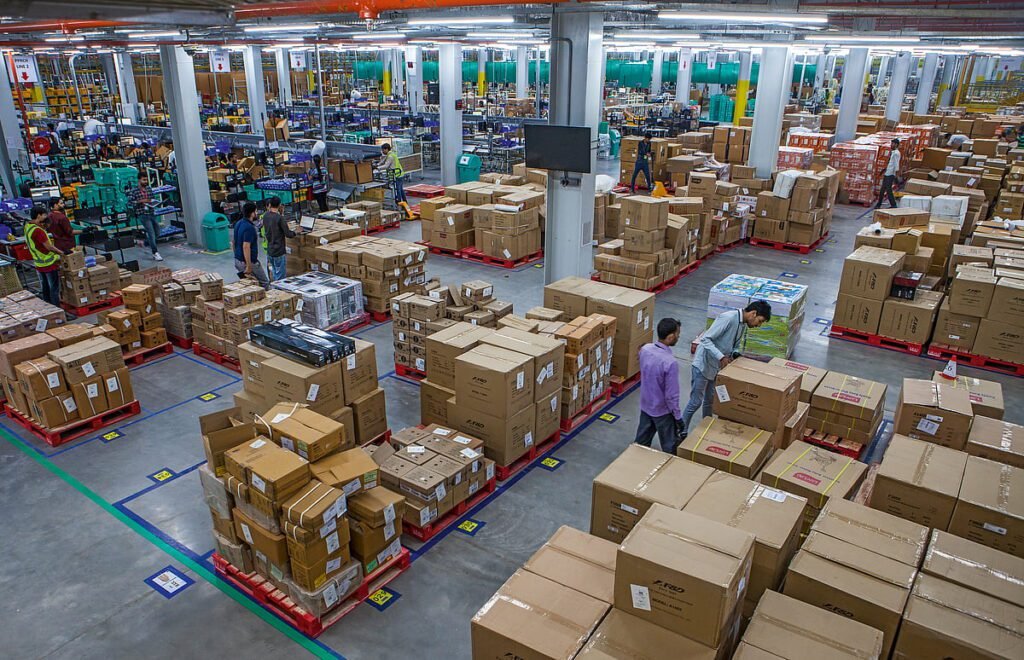Amazon’s Ambitious E-commerce Export Plans: A Game Changer for India
In a strategic move poised to significantly increase India’s presence in global e-commerce exports, Amazon Global Selling (AGS) is targeting a six-fold expansion of its Indian export portfolio. The company aims to boost its exports from the current $13 billion to a staggering $80 billion by 2030. This initiative is fueled by a diverse range of products, from traditional items like shilajit to a variety of toys, all set to be exported internationally through online platforms.
Current Landscape of E-commerce Exports
Achievements and Goals
Srinidhi Kalvapudi, head of Amazon Global Selling in India, highlighted that the company has facilitated exports worth approximately $13 billion and empowered around 150,000 exporters. “At Amazon, we believe it’s still day one—we’re only scratching the surface,” Kalvapudi stated, emphasizing the untapped potential in Indian exports.
Traditional vs. Modern Exports
Historically, India’s export success has been driven by its IT and service sectors. However, Kalvapudi notes a shift towards merchandise exports, showcasing India’s strengths in cotton textiles, ayurvedic products, and direct-to-consumer (D2C) innovations. “Our D2C ecosystem is innovating rapidly and gaining traction on global platforms,” he added.
Consumer-led Export Growth
India’s e-commerce exports are predominantly consumer-driven, with the United States leading as the top market, followed closely by the United Kingdom and the MENA region. Key categories driving this growth include:
- Skincare Products
- Ayurvedic Remedies
- Oral Care Items
- Educational Toys
- Traditional Products like Shilajit and Multani Mitti
Notably, the demand for products like shilajit has surged in the U.S. over the past two years, largely propelled by Indian sellers.
Government Initiatives Align with E-commerce Growth
The Indian government’s renewed focus on exports, as expressed by Commerce Minister Piyush Goyal, aims to elevate overall exports to $2 trillion by 2030. E-commerce exports have been recognized as a distinct category in the Foreign Trade Policy, indicating the government’s commitment to improve support for exporters.
Bridging the Gap in E-commerce Exports
While India is making strides in cross-border digital commerce, its e-commerce exports still lag behind its global competitors like China, South Korea, and Vietnam. Current estimates place India’s e-commerce export figures between $3 to $5 billion annually, compared to China’s impressive $350 billion.
A Unique Path for Indian Exports
Kalvapudi acknowledges the gap but prefers to frame India’s position positively. “We’re carving out our own parallel path,” he remarked, indicating a growing confidence in India’s unique strengths.
Overcoming Barriers to Export
Awareness and Accessibility
One significant barrier to export success is a lack of awareness among entrepreneurs, many of whom view exporting as daunting due to perceived capital and compliance requirements. Amazon is actively working to change this narrative by simplifying processes through self-service tools like Fulfillment by Amazon (FBA), and offering training through regional programs such as Export Connect.
Additionally, Amazon has partnered with the Gujarat government to reach sellers in areas like Jodhpur, emphasizing a commitment to supporting exporters.
Expanding Beyond Major Cities
Interestingly, the landscape of cross-border exports is evolving. A considerable 38% of sellers in Amazon’s Propel program this year emerged from Tier 2 and Tier 3 cities, showcasing a rise in export activities in regions like Tamil Nadu and Uttar Pradesh, particularly in textile exports.
Success Stories in International Markets
Homegrown brands are starting to gain international recognition, with examples such as Vahdam Teas gaining traction after being featured on popular shows, along with brands like Skillmatics, Sirona, and Minimalist making waves. These brands exemplify the global appeal of Indian products and resonate with international audiences.
Looking Ahead: Opportunities Amid Uncertainty
Despite ongoing geopolitical tensions and global economic uncertainties, Kalvapudi remains optimistic about the future. “This sector is fundamentally sound, driven by continuous product innovation and robust customer demand. As the ecosystem matures, we anticipate a surge in success stories,” he stated confidently.
In conclusion, Amazon’s ambitious goals for India’s e-commerce exports reflect not only its commitment to fostering entrepreneurship but also highlight the vast potential of Indian products in the global market. The collaboration between major businesses and the government sets the stage for a new chapter in India’s export journey, paving the way for robust growth in the coming years.
For more insights on e-commerce dynamics and trends, visit Amazon Global Selling or Government of India’s Commerce Ministry.


